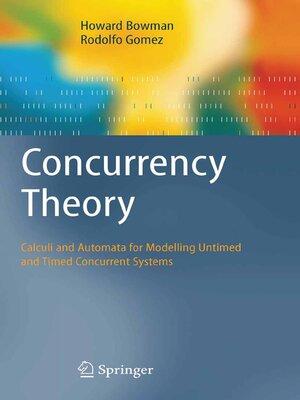Concurrency Theory
ebook ∣ Calculi an Automata for Modelling Untimed and Timed Concurrent Systems
By Howard Bowman

Sign up to save your library
With an OverDrive account, you can save your favorite libraries for at-a-glance information about availability. Find out more about OverDrive accounts.
Find this title in Libby, the library reading app by OverDrive.



Search for a digital library with this title
Title found at these libraries:
| Library Name | Distance |
|---|---|
| Loading... |
Intheworldweliveinconcurrencyisthenorm.Forexample,thehumanbody isamassivelyconcurrentsystem,comprisingahugenumberofcells,allsim- taneously evolving and independently engaging in their individual biological processing.Inaddition,inthebiologicalworld,trulysequentialsystemsrarely arise. However, they are more common when manmade artefacts are cons- ered. In particular, computer systems are often developed from a sequential perspective. Why is this? The simple reason is that it is easier for us to think about sequential, rather than concurrent, systems. Thus, we use sequentiality as a device to simplify the design process. However, the need for increasingly powerful, ?exible and usable computer systems mitigates against simplifying sequentiality assumptions. A good - ample of this is the all-powerful position held by the Internet, which is highly concurrent at many di?erent levels of decomposition. Thus, the modern c- puter scientist (and indeed the modern scientist in general) is forced to think aboutconcurrentsystemsandthesubtleandintricatebehaviourthatemerges from the interaction of simultaneously evolving components. Over a period of 25 years, or so, the ?eld of concurrency theory has been involved in the development of a set of mathematical techniques that can help system developers to think about and build concurrent systems. These theories are the subject matter of this book.







